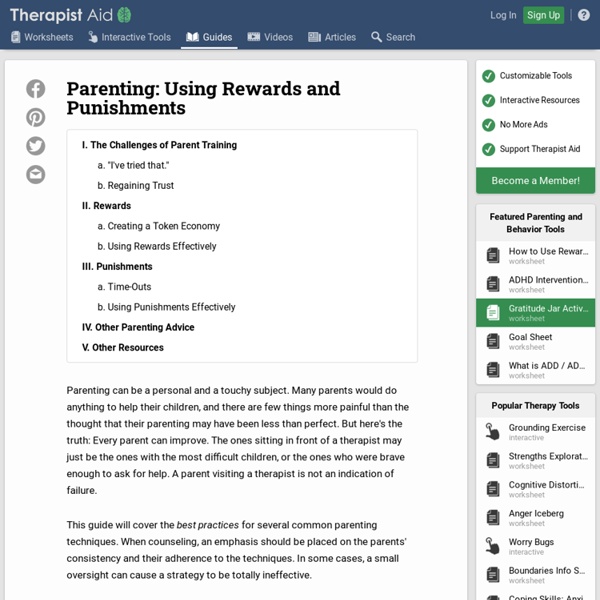Parenting Children with Positive Reinforcement (Examples + Charts)
Children don’t come with instructions and discipline is often experienced by parents and children alike as an arena where our will and wits are tested. Positive reinforcement is only one of many forms of discipline, but from the perspective of positive psychology, it may as well be the most important one as it focuses on amplifying what is already good in our children and in ourselves as their caretakers. Positive reinforcement as a form of positive discipline allows us to tap into our children’s individual strengths, draw attention to their personality traits and interests, and as a result give us an opportunity to connect, communicate effectively, and ultimately empower them to be more of themselves.
10 Controversial Ways Parents Have Punished Their Children
Tons of material has been created to instruct parents on how to punish their miscreant children. There are those who praise parents for being stern and consistent while others prefer the more compassionate approach. Time-outs, positive reinforcement, and regular family meetings may work to strengthen some parent-child relationships, but when these strategies fail—and they often do—parents can resort to far more extreme techniques. 10 Mandatory Basketball
The Difference between Positive/Negative Reinforcement and Positive/Negative Punishment
February 5, 2013 7:40 pm Published by Kelley Prince M.A., BCBA In Applied Behavior Analysis, there are two types of reinforcement and punishment: positive and negative. It can be difficult to distinguish between the four of these. Therefore, the purpose of this blog is to explain the differences in order to help parents and professionals develop appropriate interventions to improve behavior. Reinforcement Reinforcement is used to help increase the probability that a specific behavior will occur in the future by delivering or removing a stimulus immediately after a behavior.Another way to put it is that reinforcement, if done correctly, results in a behavior occurring more frequently in the future.
Difference Between Punishment and Negative Reinforcement
Key Difference – Punishment vs Negative Reinforcement Punishment and negative reinforcement are two terms that come in vocabulary of psychology between which a key difference can be discerned. Of course, punishment has a broader meaning in the society, but there are ways that punishment and negative reinforcement could be related to each other at some instances.First let us define the two words. A punishment is imposing a penalty on someone for an offence. On the other hand, Negative reinforcement is the removal of something which was unpleasant to a person or an animal in order to create a favorable outcome to that person/animal. As you can observe there is a clear difference between the two words as punishment entails imposing a penalty whereas negative reinforcement entails removal of something.
Negative Reinforcement vs Punishment - Difference
By: Editorial Staff | Updated: Jan-25, 2018 In behavioral psychology, negative reinforcement and punishment are forms of control that are meant to modify behavior. This similarity is perhaps why it’s confusing to tell one from the other. This article will help shed some light on the difference between these two. Summary Table
Disadvantages Of Operant Conditioning
Necessary cookies help make a website usable by enabling basic functions like page navigation and access to secure areas of the website. The website cannot function properly without these cookies. Preference cookies enable a website to remember information that changes the way the website behaves or looks, like your preferred language or the region that you are in. Statistic cookies help website owners to understand how visitors interact with websites by collecting and reporting information anonymously.
Unwanted Effects of Reinforcement: The Bad Effects of a ...
Reinforcement is a highly recommended strategy in applied behavior analysis. However, it is important to consider the possible unwanted effects of reinforcement. Lets look over a few examples of some of the potential unwanted effects of reinforcement. Examples of the potential unwanted effects of using reinforcement include but is not limited to the following:
What Is Reinforcement in Operant Conditioning?
One of the many different ways in which people can learn is through a process known as operant conditioning (also known as instrumental conditioning).1 This involves learning through reinforcement or punishment. The type of reinforcement used can play an important role in how quickly a behavior is learned and the overall strength of the resulting response. Understanding Reinforcement Reinforcement is a term used in operant conditioning to refer to anything that increases the likelihood that a response will occur.
14 Best Examples Of Operant Conditioning
Operant conditioning, also known as instrumental conditioning, is a method of learning that employs punishments and rewards for behavior. In this method, a link is established between a behavior and a consequence (whether positive or negative) for that behavior. For example, when a monkey presses a button when a LED is on, he receives a banana as a reward. When he presses the button when the LED is off, he receives a mild electric shock.



